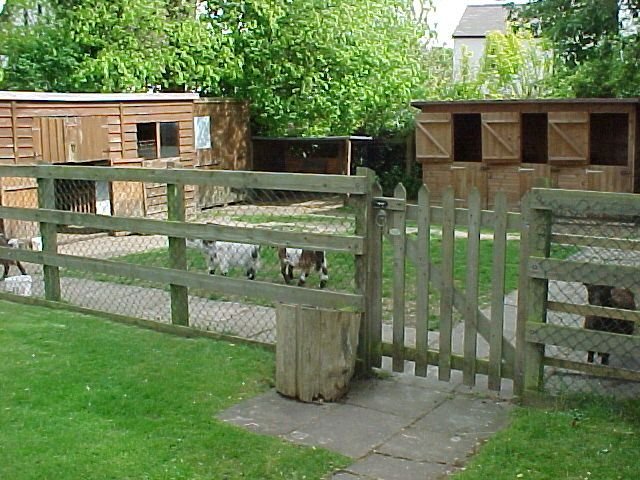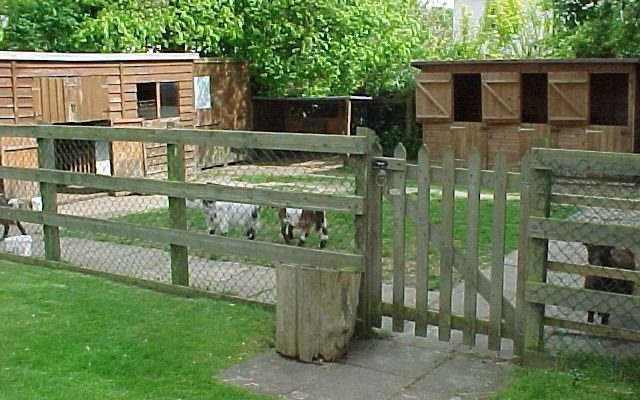
Think of housing for pygmy goats like setting up a cozy studio apartment. Just as you wouldn’t want to live in a space that’s too cramped or poorly designed, your goats need an area that’s safe, comfortable, and conducive to their natural behaviors. This article will guide you through what you need to create a perfect home for your pygmy goats, covering everything from shelter options to effective fencing.
The Basics of Pygmy Goat Housing
To start, let’s discuss what constitutes suitable housing for pygmy goats. These little ruminants need a shelter that protects them from harsh weather conditions, whether it’s scorching heat or freezing cold. A well-constructed barn, shed, or even a simple three-sided shelter can do the trick. Remember, you want their home to be safe and provide plenty of space to roam and relax.
Space is critical. Ideally, you should allocate at least 15 to 20 square feet per goat for indoor shelter. This gives them room to move around comfortably. When it comes to the outdoor area, the more space, the better! A spacious, fenced pasture allows them to graze, play, and explore, which keeps them physically active and mentally stimulated. Think of it as a playground where they can burn off some steam.
Don’t forget about ventilation! Proper airflow is essential for preventing respiratory problems in goats. Ensure your shelter has enough openings or install fans if necessary. You might even consider adding straw or shavings to the floor. This not only provides a soft place for them to lie down but also helps absorb moisture and reduce odors.
Choosing the Right Shelter Materials
When it comes to materials, it’s essential to choose the right ones for your goats’ shelter. Wood is a popular choice due to its durability and insulation properties. However, if you’re in a wetter climate, consider using pressure-treated wood or metal to prevent rot. A concrete floor can also be an option, but ensure it has a good drainage system and ample bedding on top to keep your goats comfy.
You might be wondering how to maintain the shelter over time. Regular cleaning is key. Make it a habit to remove any waste, so your goats have a clean, healthy environment. Regularly inspect the structure for any damage, and don’t hesitate to make repairs as needed. Just like a home needs upkeep, so does your goats’ shelter!
Also, consider adding some enrichment items inside their space. Things like logs, climbing structures, or even a small ramp can keep them entertained. Pygmy goats are known for their playful nature, and having engaging features will help them stay occupied.
Fencing Your Pygmy Goat Area
Now that you have an idea about housing, let’s talk fencing. Pygmy goats are curious and active creatures that love to explore. So, having a robust and secure fence is crucial to keep them safe and contained. An ideal fencing height for pygmy goats is around 4 to 5 feet.
But what type of fencing should you use? There are several options:
- Wire Fencing: This is a cost-effective option. Fence panels or welded wire provide a solid barrier, but make sure it’s tall enough to prevent jumping.
- Stock Fencing: This type keeps larger animals out and prevents your goats from escaping. Pair it with barbed wire or electric fencing for added security.
- Wood Fencing: Not only does it look great, but it’s also sturdy. Just ensure the wood is weather-treated for durability.
When setting up the fence, pay attention to gaps. Goats are known for their escape artist skills, so check for any holes or weak spots. A goat can squeeze through surprisingly small openings! You might want to dig the bottom of the fence into the ground (about a foot) to prevent burrowing.
Creating a Safe Outdoor Space
In addition to the fence itself, the surrounding outdoor space is just as important. Make sure the area is free of hazards like sharp objects, toxic plants, or anything else that could injure your goats. You should also ensure that there’s adequate shelter outside. Even when they’re outside, your goats will need somewhere to retreat and find shade.
Consider installing a small water trough or a shaded area with trees or tarps where they can escape the sun. Access to fresh, clean water is essential, especially during hot days. You wouldn’t want to be thirsty all day, right? Your goats feel the same way.
Additionally, having a well-maintained pasture is important. Regularly rotate grazing areas to prevent overgrazing and allow the grass to recover. This practice supports both their health and the environment.
Managing Goats in Winter
Winter can be a challenging time for goats, especially if you live in a colder climate. Providing appropriate shelter becomes even more critical. Ensure their housing is insulated and draft-free while still allowing for ventilation. You might want to add extra bedding in colder months to keep them warm and comfy.
Check the water supply regularly, as goats need access to fresh water all year round. In colder temperatures, water can freeze quickly, so you might need to invest in a heated water bowl. It’s a small investment that goes a long way in keeping your goats happy and hydrated.
Additionally, monitor their diet. Goats burn more calories to stay warm in winter, so you may need to adjust their feed. Providing them with hay or grains can help them maintain their body temperature. Remember, a happy goat is a healthy goat!
Local Regulations and Considerations
Before setting up your housing and fencing, it’s essential to check any local regulations regarding livestock. Some areas have specific rules about the number of goats you can keep, how far they must be from property lines, or types of fencing allowed. Ignoring these regulations can lead to fines or other issues you definitely want to avoid!
Feel free to connect with local goat farmers or community groups. They can offer insights and advice based on their experiences. Plus, networking in your community can provide support when you first start your goat journey.
Final Thoughts on Pygmy Goat Housing and Fencing
Creating a comfortable and safe environment for your pygmy goats doesn’t have to be overwhelming. With the right housing and effective fencing, you can ensure your goats live a happy and healthy life. Remember, they thrive on companionship, so consider having more than one goat to keep your pets happy!
You’ve learned about their housing needs, fencing options, and even some winter care tips. So, as you embark on this goat-raising adventure, keep these pointers in mind. Your pygmy goats will appreciate the effort, and you’ll find joy in watching them live their best lives! Happy goat-keeping!

